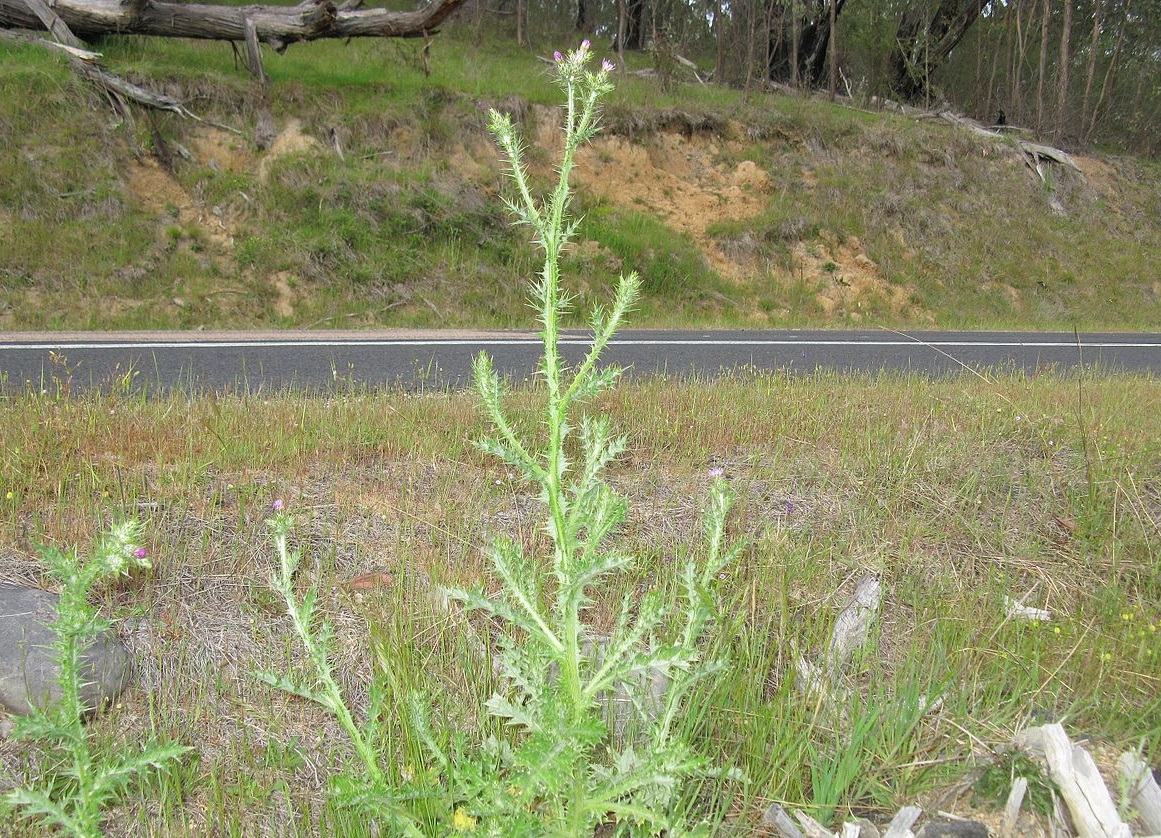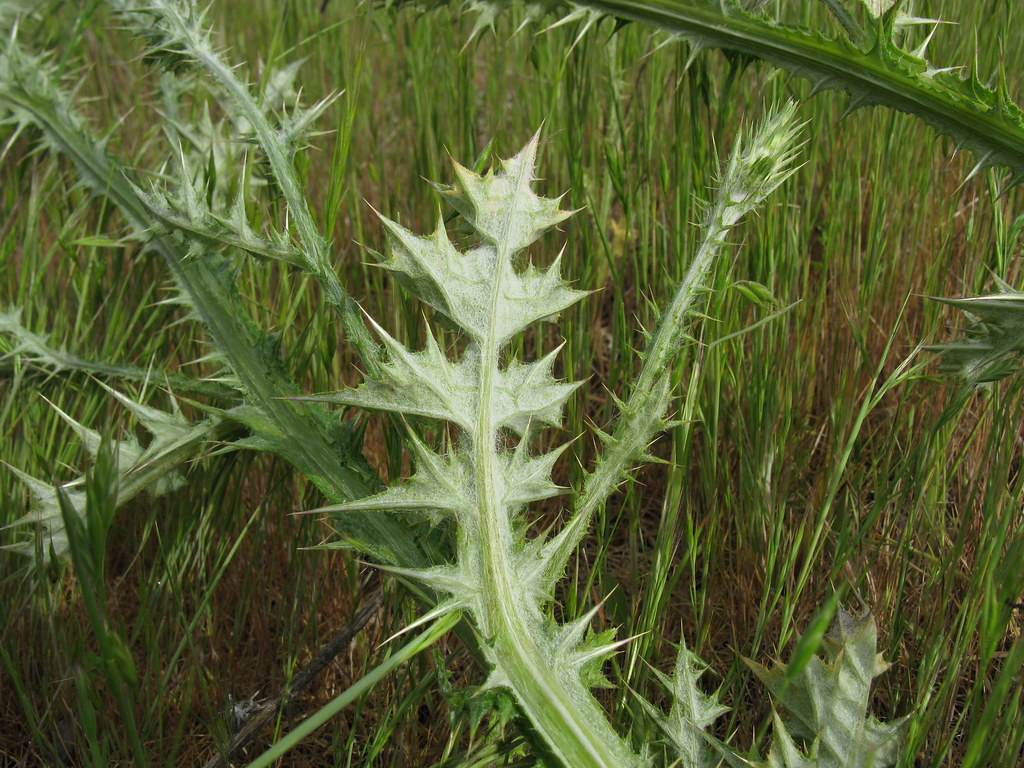Italian Thistle

Italian Thistle
(Carduus pycnocephalus)
Priority: - Prevent / EDRR
Tags: Agricultural
Identification and Reproduction
Identification:
- Italian thistle is an annual plant. It grows between 0.3-1.2 m tall, condition dependent.
- Winged, spiny slender stem.
- They produces leaves that are green from above but are white and covered in hairs below. These hairs are often referred to resemble cobwebs.
- Leaves are pinnately lobed with spines becoming more prominent near the tip.
- Flowerheads are purple, narrow, and appear in clusters of 2-5. The bracts are stiff and upright with hairs. It flowers from September through December.
Reproduction:
- This plant only reproduces by seed.
- A single plant can produces 20,000 seeds in one growing season.
- They produce two types of seeds; brown and silver seeds. Brown seeds remain in the flowerhead and fall at the end of the growing season. Silver seeds are carried by wind and can remain viable in the soil longer (upto 10 years).
- Seed germination is very high; 83-96%.
Habitat & Ecology
- Italian thistle takes over pastures and rangelands.
- Prefers droughty conditions.
- Any disturbance activities will trigger aggressive growth of this plant.
Impacts
Social:
- Reduces foliage availability and displaces native species.
- Displaces desired crop species.
- Can limit the mobility and injure livestock.
- Leaves have also been prone to contaminating wool.
Ecological:
- It overwinters in a rosette form and a patch can have a blanketing effect. They will out-crowds and prevent spring establishment of native species.
Management
Prevention is a high priority for this plant.
If you notice Italian thistle, please report it.
Resources
For more for details check out the Invasive Species Compendium datasheet on Carduus pycnocephalus.
For more information on thistle identification and comparisons between look-alike species check out this resource by the Clackamas County on both native and non-native thistles.
For information on control options, check out the Weed Report on plumeless, musk, Italian, and slenderflower thistles from the Weed Control in Natural Areas in the Western United States. Please note, that this resource is based in the USA and reccomendations around herbicide use may not apply to the Fraser Valley,
Header photo (Harry Rose).
Photo Gallery






